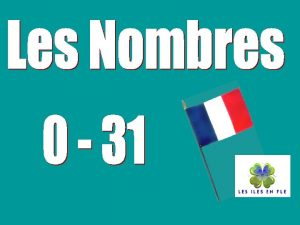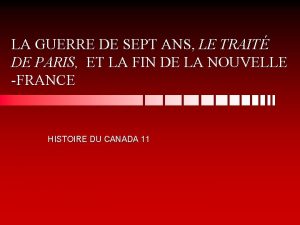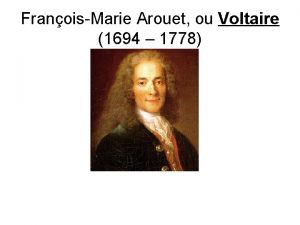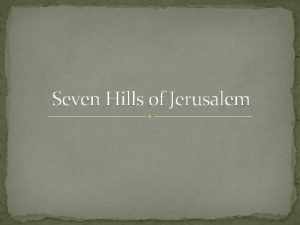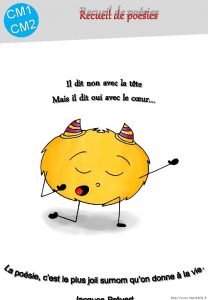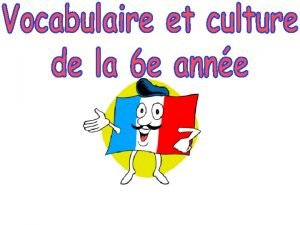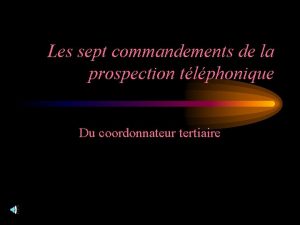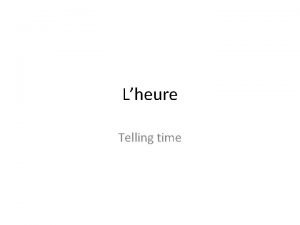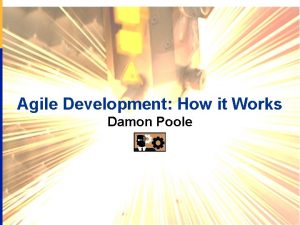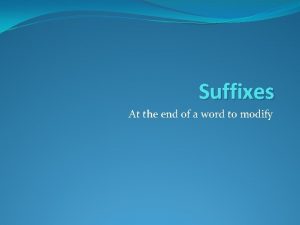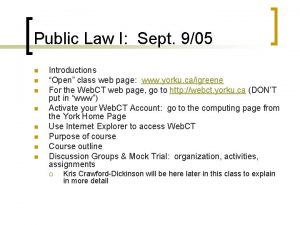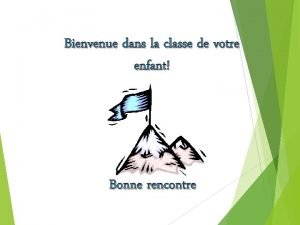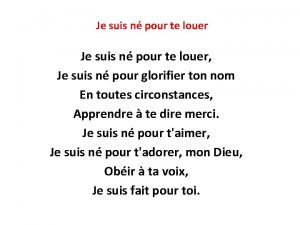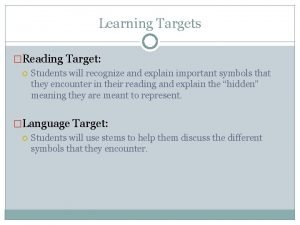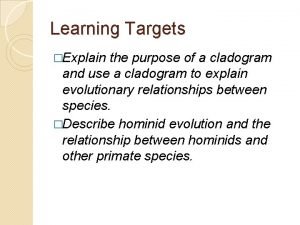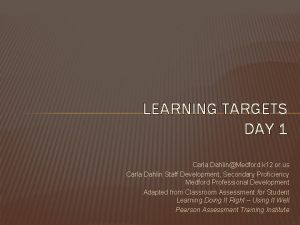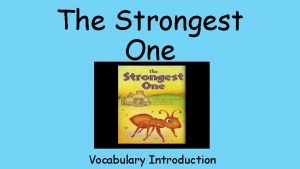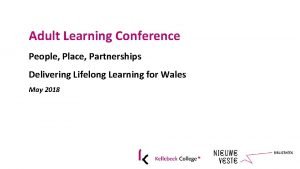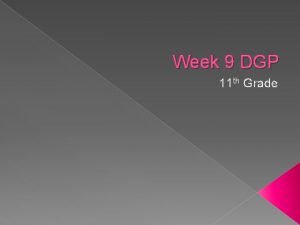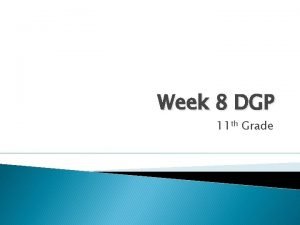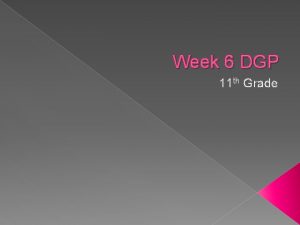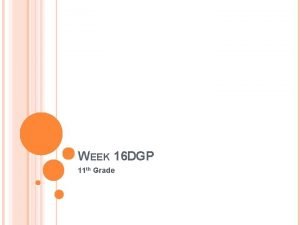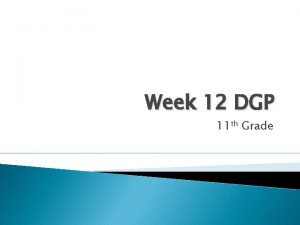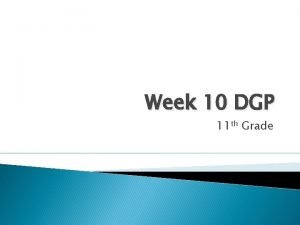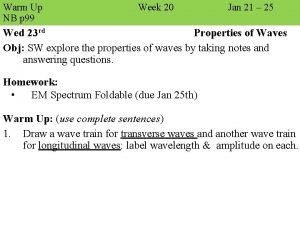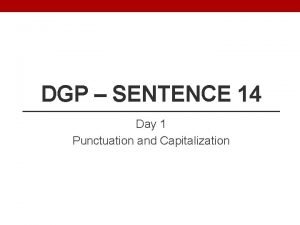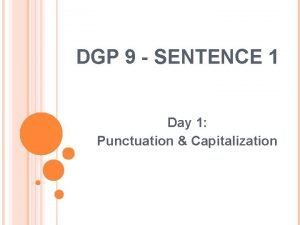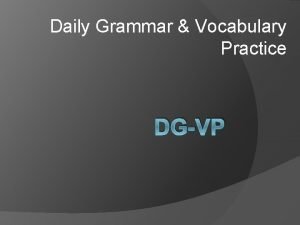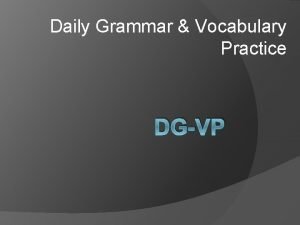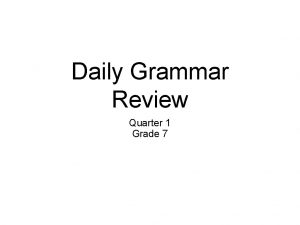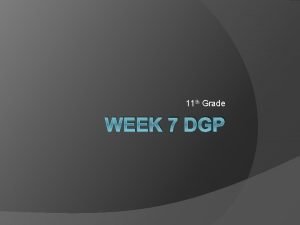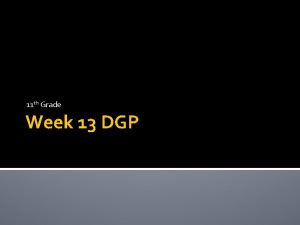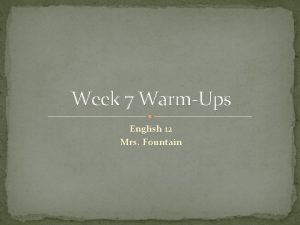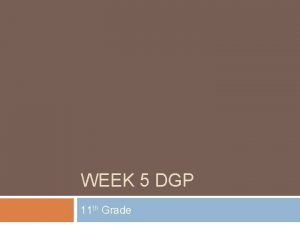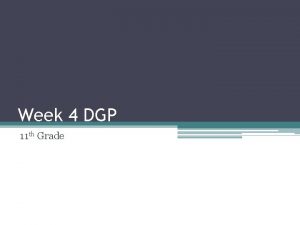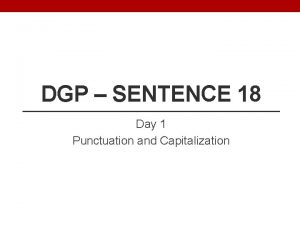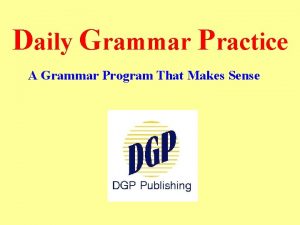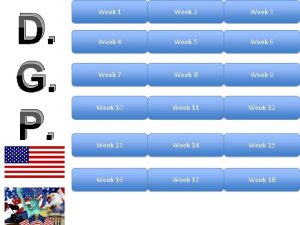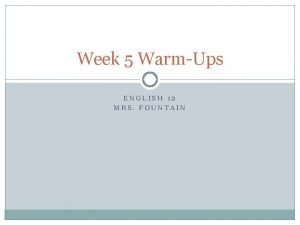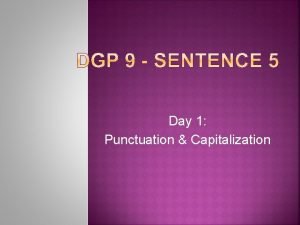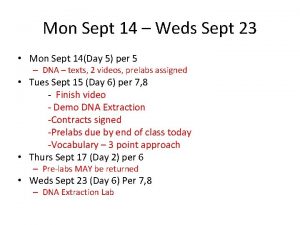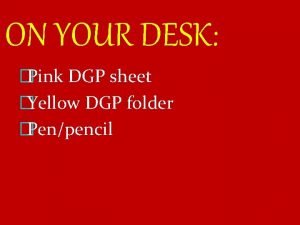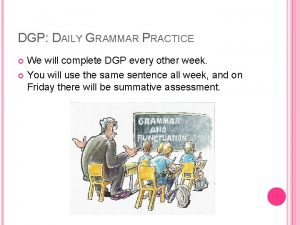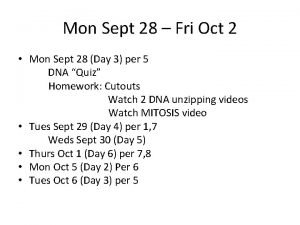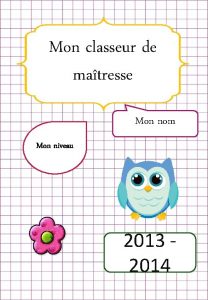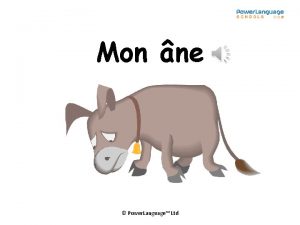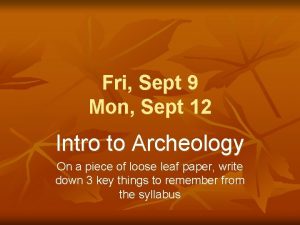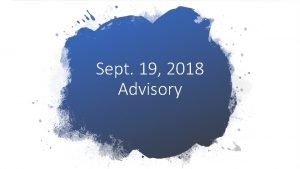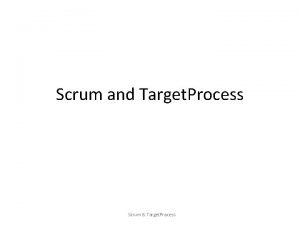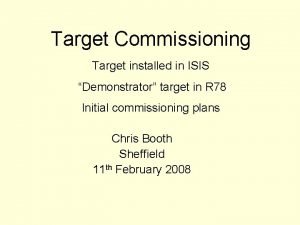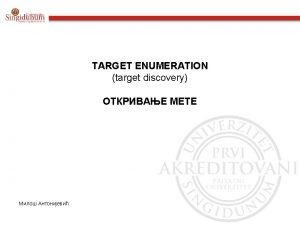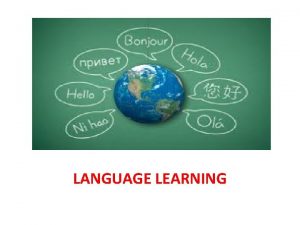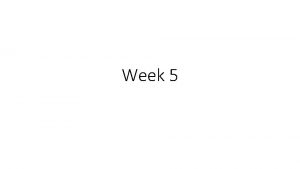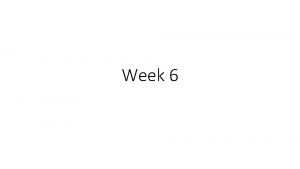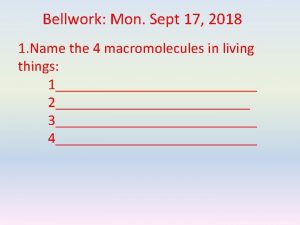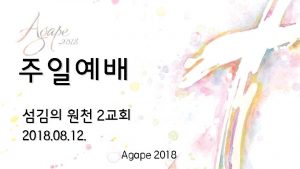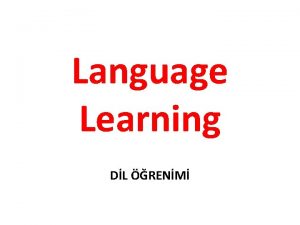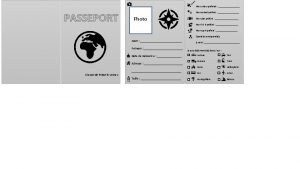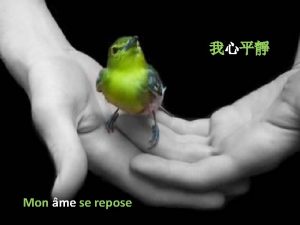DGP Mon Sept 4 2018 Learning Target I

















































- Slides: 49

DGP: Mon. Sept 4, 2018 Learning Target: I can enjoy time at home! No School

DGP: Wed. Sept 5, 2018 In class, we are most recently learning about plot and theme. Learning Target: Activities: Theme/ Plot PPT I can diagram the plot of Presto Pixar/Plot Theme Activity (Ms. Herman) I can interpret theme of Presto WOWS (From The Stone)--on next slide

WOWS (From The Stone) 1. 2. 3. 4. 5. Dismay- (verb)- to lose courage/hope Eagerly (adv)- with great anticipation Rue (v)- to feel regret/sorrow Fuming (v)- showing great anger Mired (v)-stuck; as if in mud

Elements of a story • • • Setting Character Plot Conflict Theme

Elements of a Story What you need to know!

Story Elements ➢Setting ➢Characters ➢Plot ➢Conflict ➢Resolution ➢Point of View ➢Theme

Setting • Setting is the “where and when” of a story. It is the time and place during which the story takes place.

Setting Time and place are where the action occurs Details that describe: ✓Furniture ✓Scenery ✓Customs ✓Transportation ✓Clothing ✓Dialects ✓Weather ✓Time of day ✓Time of year

The Functions of a Setting ➢To create a mood or atmosphere ➢To show a reader a different way of life ➢To make action seem more real ➢To be the source of conflict or struggle ➢To symbolize an idea

Mood • Mood is the feeling that the author tries to convey throughout the story. The atmosphere or emotional condition created by the piece, within the setting. Does the author want the reader to be frightened or sad, or does the story make the reader laugh and think happy thoughts? • To figure out mood, examine how you feel while reading the story. Often mood is conveyed by the

Characters • The person, animals, and things participating in a story

Characters • Protagonist and antagonist are used to describe characters. • The protagonist is the main character of the story, the one with whom the reader identifies. This person is not necessary “good”. • The antagonist is the force in opposition of the protagonist; this person may not be “bad” or “evil”, but he/she opposes the protagonist in a

Plot (definition) • Plot is the organized pattern or sequence of events that make up a story. • Plot is the literary element that describes the structure of a story. It shows arrangement of events and actions within a story.

Parts of a Plot ➢Exposition - introduction; characters, setting and conflict (problem) are introduced ➢Rising Action- events that occur as result of central conflict ➢Climax- highest point of interest or suspense of a story ➢Falling Action - tension eases; events show the results of how the main character begins to resolve the conflict

Plot Diagram 3 2 1 4 5

1. Exposition • This usually occurs at the beginning of a short story. Here the characters are introduced. We also learn about the setting of the story. Most importantly, we are introduced to the main conflict (main problem).

2. Rising Action • This part of the story begins to develop the conflict(s). A building of interest or suspense occurs and leads to the climax. Complications arise

3. Climax • This is the turning point of the story. Usually the main character comes face to face with a conflict. The main character will change in some way. This is the most intense moment.

4. Falling Action • Action that follows the climax and ultimately leads to the resolution

5. Resolution • The conclusion; all loose ends are tied up. • Either the character defeats the problem, learns to live with the problem, or the problem defeats the character.

Putting It All Together 1. Exposition 2. Rising Action Beginning of Story Middle of Story 3. Climax End of Story 4. Falling Action

Diagram of Plot Introduction/ Exposition Setting, characters, and conflict are introduced llin Fa g tio Ac n De nt/ vel op Ri me s i Ac ng tio n Climax Resolution

Special Techniques used in a Story ➢Suspense- excitement, tension, curiosity ➢Foreshadowing- hint or clue about what will happen in story ➢Flashback- interrupts the normal sequence of events to tell about something that happened in the past ➢Symbolism – use of specific objects or images to represent ideas ➢Personification – when you make a thing, idea or animal do something only humans do ➢Surprise Ending - conclusion that reader

Conflict is the dramatic struggle between two forces in a story. Without conflict, there is no plot.

Conflict ➢Conflict is a problem that must be solved; an issue between the protagonist and antagonist forces. It forms the basis of the plot. ➢Conflicts can be external or internal ✓External conflict- outside force may be person, group, animal, nature, or a nonhuman obstacle ✓Internal conflict- takes place in a character’s

Types of External Conflict Character vs Nature Character vs Society Character vs Fate

Type of Internal Conflict Character vs. Self

Theme ➢The theme is the central, general message, the main idea, the controlling topic about life or people the author wants to get across through a literary work ➢To discover theme of a story, think big. What big message is the author trying to say about the world in which we live? ➢What is this story telling me about how life

The Theme is also • the practical lesson ( moral) that we learn from a story after we read it. The lesson that teaches us what to do or how to behave after you have learned something from a story or something that has happened to you. Example: The lesson or teaching of the story is be careful when you’re offered something for nothing.

DGP: Thur. Sept 7, 2018 Learning Target: I can use best taking strategies. Activities: MAPS Testing ! (Reading Lab 134)

DGP: Fri. Sept 8, 2017 Learning Activities: WOWS DUE! Pixar Short Film for Plot I can identify elements of plot. Dug’s Special Mission-practice Target: https: //www. youtube. com/watch? v=o. NL 945 i 6 q. A 8 For the Birds Target Check • I can use plot elements to help me identify theme. https: //www. youtube. com/watch? v=p. WIVo. W 9 j. AOs&t=79 s Independent Reading with Notice and Note logging

DGP: Mon. Sept 11 , 2018 Some memories are etched in stone. Identify the parts of speech Learning Target: ● I can use text evidence to support my answers. ● I can analyze key details given to informative text that help me understand what is presented Activities WOWS assigned-Due Thurs! Underhill 9/11 Scope Magazine “Shattered Lives” with packet activities http: //www. schooltube. com/video/eaf 02 ddc 6792 f 30 a 839 b/Remembering%209 -11

WOWS 1. 2. 3. 4. 5. Nonsense (n)- silly/unnecessary behavior Runaway (adj)- describes something that “got away” Raggedy (adj)-tattered/ old Underneath (prep)- below Finally (adv)- the end result of a process

DGP: Tue. Sept 12 , 2017 DGP: He gratefully opened to the lesson. Learning Target: I can determine the meaning of of figurative and connotative words. I can demonstrate conventions of English grammar via writing WOW sentences (w/rubric) Activities: WOWS assigned –Due Thursday Fig Lang PPT w/ notes in TB Figurative Flash

DGP: Wed. Sept 13, 2017 DGP: Are Sounder and Old Yeller books about dogs? Learning Target: I can identify elements of plot. • I can use plot elements to help me identify theme. Activities: WOWS DUE! Read Holt Lit The Stone pg. 31 -37 Page 39 Answer Questions 2 -6 Finish Figurative Lang. PPT

DGP: Thursday, Sept 14 , 2018 DGP: You c an have your cake and eat it, too. Learning Target: I can identify elements of plot. • I can use plot elements to help me identify theme. Activities: Pre-reading Q’s (packet Read Eleven-stop after 1 st pg for VISUALIZATION sketches *During the reading students will respond to a t-chart in Thinkbooks NOTING ALL FIG LANGUAGE read (on left) and category (on right) Answer DURING reading q’s as teacher stops to discuss

Thursday, September 14 th DGP: He was strong and fast as the left tackle. Target: I can identify theme and how the main character helps to contribute to theme. I can use text evidence to support my answers. Activities: Quick Write pg. 18 in Thinkbook Read “Just Once” pg. 19 -26 Answer Questions #2 -#6 on page 27

DGP: Friday. Sept 15 , 2018 DGP: It’s my party, and I’ll cry if I want to. Learning Target: I can identify elements of plot related to a story that I read. • I can use plot elements to help me identify theme. Activities: Continue Eleven packet work and finish with Character Analysis page/Discuss Parts of Speech- Verb Target check!

DGP: Mon. Sept 18 , 2018 DGP: He had come like a thief in the night. Learning Target: Activities WOWS due Thur ● I can demonstrate Devastating(v) tolerant(adj) anonymous (adj) conventions of English ponder (v), hapless (adj) grammar via writing ● Ms Herman “Google Faces Activity WOW sentences (w/rubric) for Direct and Indirect ● I can write using direct and Characterization indirect characterization. Finish “Eleven” Packet

WOWS 1. devastating (adj)- complete sorrow/loss; a “let down” (if you use “devastate/d” then you have a VERB) 2. tolerant(adj)- able to withstand (ie) The teacher was tolerant of the grumpy student. 3. anonymous (adj)- unknown 4. ponder (v)- to think deeply over/dwell 5. hapless (adj)- having no luck

DGP: Tue. Sept 19 , 2017 DGP: Smoke drifted lazily from a quaint chimney. Learning Target: ● ● I can compare and contrast fictional stories of different genres. I can identify the genre and subgenre of popular movies. Activities: ● • Genre PPT and Identifying Genres worksheet Genre/Sub Genre movie activity w/Ms. Herman

DGP: Wed. Sept 20, 2017 DGP: Hitch your wagon to the horse. Learning Target: I can determine how an author develops a character(s) P. O. V. via characterization Activities: Finish Genre hand-out (from yesterday). Characterization PPT Finish LAST page of “Eleven” packet

DGP: Thur. Sept 21 , 2017 DGP: Although Caleb fractured his femur, he was still able to chase Sayde. Learning Activities: Target: I can identify components of original fairytales. Watch “Hansel and Gretel” https: //www. youtube. com/watch? v=Te. Lx. Pv. BKrd. I Read “Let it Go” and “Freak Frog” –identify descriptive details and indirect characterization

DGP: Fri. Sept Learning Target: I can identify genre and sub genre I can identify direct and indirect characterizations I can identify elements of fracture ● ● ● 22, 2017 Activities: ● Read “Obe and Ese”-identify fractures ● Read “Let it Go” and “Freak Frog” –identify descriptive details and indirect characterization ● Genres/Characterization Target Check ● Media Center /INDEPENDENT Reading

DGP: Learning Target: I can compare and contrast texts in differing forms. Mon. Sept 25, 2018 Activities: NO WOWS! Watch Alice in Wonderland movie HW-movie review

DGP: Learning Target: I can compare and contrast texts in differing forms. Tue. Sept 26, 2017 Read Sleeping Beauty (original) Fill-out plot diagram Begin Maleficent

DGP: Wed. Sept Learning Target: I can compare and contrast texts in differing forms. 27, 2017 Activities: Finish Maleficent Story verses film comparison

DGP: Thur. Sept Learning Target: I can write a fractured fairytale OR fantasy incorporating descriptive details, narrative dialogue, and all elements of plot. 28, 2017 Activities: Discuss Fractured Fairytale rubric Create a story map with partner

DGP: Fri. Sept Learning 29, 2018 Target: I can write a fractured fairytale OR fantasy incorporating descriptive details, narrative dialogue, and all elements of plot. Activities: Rough Draft for fractured fairy tales Finish After fall break
 Trois quatre cinq
Trois quatre cinq Deportes
Deportes Candide ou l optimisme
Candide ou l optimisme Is jerusalem built on seven hills
Is jerusalem built on seven hills Poesie le dernier sapin de truchi
Poesie le dernier sapin de truchi Ecrivez les sept jours de la semaine
Ecrivez les sept jours de la semaine Sept commandements
Sept commandements Cnn 10 2018
Cnn 10 2018 Sept heure moins le quart
Sept heure moins le quart Accu poole sept
Accu poole sept Suture to stabilize suffix
Suture to stabilize suffix Sept
Sept I sept
I sept Sept comme setteur questionnaire
Sept comme setteur questionnaire Primary target market and secondary target market
Primary target market and secondary target market Que letra continua m v t m j
Que letra continua m v t m j Cuadro comparativo de e-learning
Cuadro comparativo de e-learning Je suis né pour te louer
Je suis né pour te louer Learning target template
Learning target template Learning target symbol
Learning target symbol Learning target 4.6 cladogram
Learning target 4.6 cladogram Learning target examples math
Learning target examples math Target needs and learning needs
Target needs and learning needs Learning target
Learning target Learning target
Learning target Learning target
Learning target Lifelong learning conference 2018
Lifelong learning conference 2018 Dgp week 11 answers
Dgp week 11 answers The girl who sits behind rafael is a better student than i
The girl who sits behind rafael is a better student than i In his poem thanatopsis dgp
In his poem thanatopsis dgp Dgp week 16
Dgp week 16 Cannibal canoe hurricane and barbecue
Cannibal canoe hurricane and barbecue Dgp week 10
Dgp week 10 Dgp week 20 answers
Dgp week 20 answers In the novel a tale of two cities dgp
In the novel a tale of two cities dgp Dgp 9
Dgp 9 Dgp week 14 answers
Dgp week 14 answers Dgp week 10 answers
Dgp week 10 answers Dgp sentences 7th grade answers
Dgp sentences 7th grade answers Dgp week 7 answers
Dgp week 7 answers Sandra cisneros lived with eight other family members
Sandra cisneros lived with eight other family members The druids may have used stonehenge dgp
The druids may have used stonehenge dgp Dgp week 6 answers
Dgp week 6 answers Dgp week 11 answers
Dgp week 11 answers Dgp
Dgp After we read the play the taming of the shrew
After we read the play the taming of the shrew Daily grammar practice dgp
Daily grammar practice dgp Dgp week 17
Dgp week 17 Even though beowulf was originally dgp
Even though beowulf was originally dgp Jeb likes cars but he can't drive yet
Jeb likes cars but he can't drive yet
